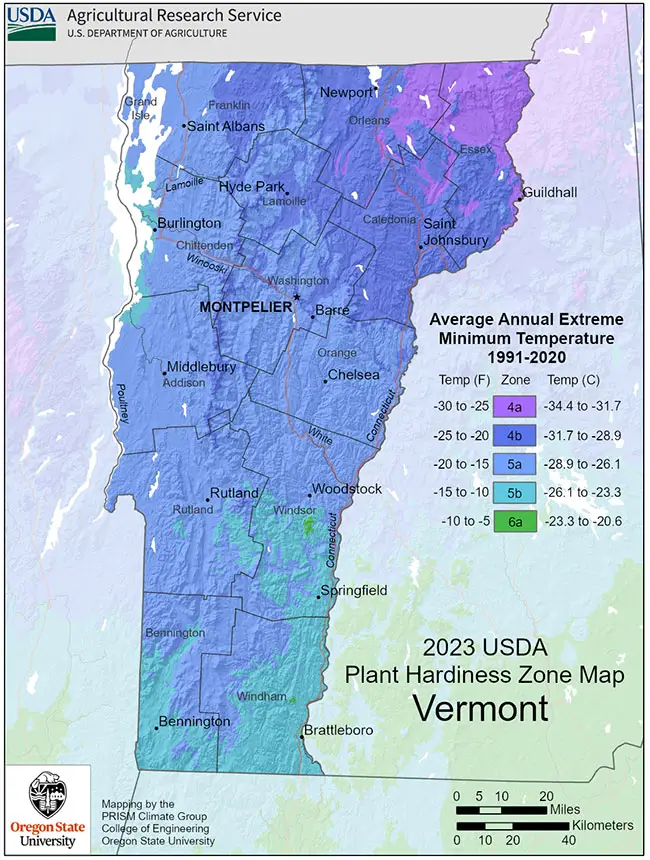
Vermont, with its humid continental climate characterized by frigid winters and warm, humid summers, is not conducive to the growth of palm trees.
During July, the average temperatures in Vermont typically span from 60 to 81°F (15-27°C), while in January, they plummet to a range between 4°F and 25°F (-15°C to -3°C). Notably, fall emerges as the most enjoyable season in this state.
Vermont has experienced extreme temperature ranges, with the highest ever recorded at 105°F (41°C) and the lowest plummeting to a bone-chilling -50°F (-46°C).
The state witnesses an annual snowfall averaging between 60 to 100 inches (152-254 cm), depending on the specific location. Vermont’s USDA hardiness zones encompass a range from 3b to 5b.
Growing Palm Trees in Vermont
Since Vermont is too cold for outdoor palm trees, the only way to have palm trees is to grow them indoors. Here are some great indoor palms:
- Areca Palm Tree – Zones 9a – 11 (20 to 25 F)
- Chinese Fan Palm Tree – Zones 8a – 11 (10 to 15 F)
- Kentia Palm Tree – Zones 9b – 11 (25 to 30 F)
- Lady Palm Tree – Zones 8b – 11 (15 to 20 F)
More Palm Trees»
Major Cities in Vermont
- Burlington – Hardiness Zone 4b
